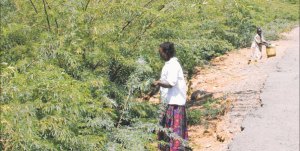
The term “biomass” encompasses diverse fuels derived from timber, agriculture and food processing wastes or from fuel crops that are specifically grown or reserved for electricity generation.
The Cummins Cogeneration Kenya Ltd intends to put up a 12 MW – per year – biofuel plant in Marigat, Baringo County at a cost of Shs 220 million (US$22 million).
The power plant will be fed by the Prosopis Juliflora tree commonly known as “Mathenge”. It was named after a botanist who went by the name Mathenge who initiated it. The tree was first introduced in Kenya in 1973 from Brazil for the rehabilitation of quarries in Mombasa by Bamburi Cement.
It was later introduced in Baringo, Tana and Pokot areas to serve as a windbreak to cut erosion, slow desertification and curb fuel wood shortages. Baringo has a Mathenge forest cover of about 30,000 hectares, the highest density of the invasive plant in Kenya. The forest can serve the power plant for over 20 years.
Prosopis Juliflora is a hardy plant that grows very fast even with little water and is ready for harvest within two to three years. The harvested plant grows back to its original size in 16 to 18 months.
The mathenge tree produces good quality fuel, about 5000 kcal/kg, which burns well even when freshly cut. The waste from the combustion process can be recycled into charcoal briquettes for sale. The tree will be transformed from an invasive weed to a cash crop.
The unit price of producing electricity from biomass is 8 US cents per KWh. Biomass ranks second as the cheapest source of energy after geothermal power, which costs 6.4 US cents; and beats hydro and thermal, which cost 12.5 US cents and 10.2 US cents respectively according to 2012 estimates.
The Prosopis Juliflora tree has successfully been used as feedstock at energy generation plants in India.
The biomass energy project will be off-grid and will be distributed under the supervision of the local government. It is a perfect example of an off-grid power source which has been lauded as a solution to tackling energy poverty. And integrating the biomass power with the Perkerra irrigation scheme could serve as a catalyst in mitigating rural poverty in Marigat.